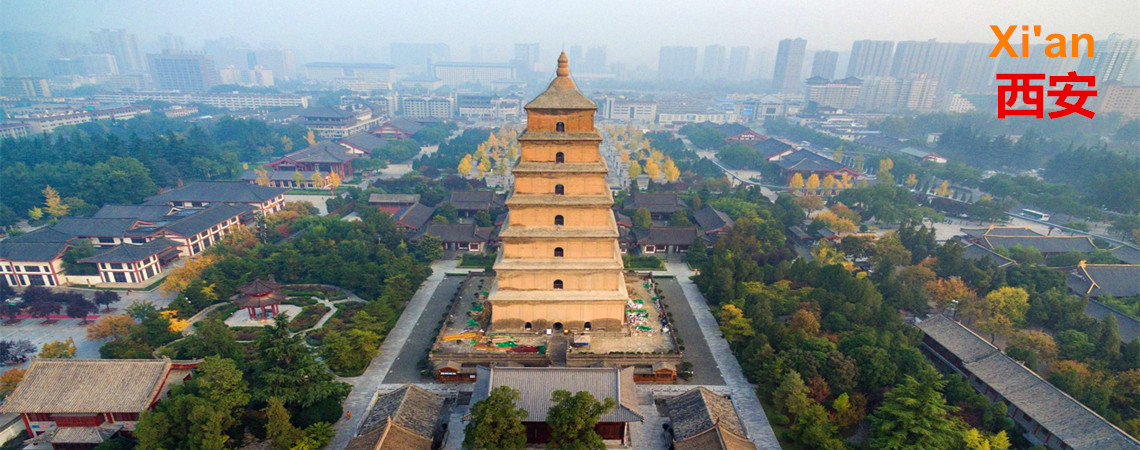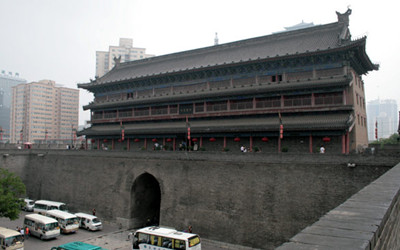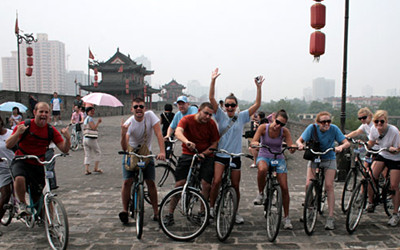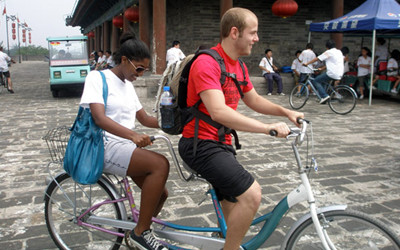Skype: neodalle-travel
Tel: +86 135 7447 2266
E-mail: sales@visitaroundchina.com

 When Zhu Yuanzhang, the first Emperor of the Ming Dynasty (1368-1644), captured Huizhou, a hermit named Zhu Sheng admonished him that he should 'built high walls, store abundant food supplies and take time to be an Emperor,' so that he could fortify the city and unify the other states. After the establishment of the Ming dynasty, Zhu Yuanzhang followed his advice and began to enlarge the wall built initially during the old Tang Dynasty (618 - 907), forming today's scale of Xian City Wall.
When Zhu Yuanzhang, the first Emperor of the Ming Dynasty (1368-1644), captured Huizhou, a hermit named Zhu Sheng admonished him that he should 'built high walls, store abundant food supplies and take time to be an Emperor,' so that he could fortify the city and unify the other states. After the establishment of the Ming dynasty, Zhu Yuanzhang followed his advice and began to enlarge the wall built initially during the old Tang Dynasty (618 - 907), forming today's scale of Xian City Wall. The wall was built of earth, rammed layer upon layer during the early time. The base layer was made of earth, quick lime, and glutinous rice extract, tempered together. This made the wall extremely strong and firm. Later, the wall was totally enclosed with bricks. The Ming City wall encircles the city in a rectangle with one gate on each side. On the wall, fortifications such as watch towers, ramparts, (duo-kou) were built into a complex and well-organized system of defense.
The wall was built of earth, rammed layer upon layer during the early time. The base layer was made of earth, quick lime, and glutinous rice extract, tempered together. This made the wall extremely strong and firm. Later, the wall was totally enclosed with bricks. The Ming City wall encircles the city in a rectangle with one gate on each side. On the wall, fortifications such as watch towers, ramparts, (duo-kou) were built into a complex and well-organized system of defense. Try biking on the Wall, you will have an enjoyable and interesting experience. To cycle round the wall for a whole circle takes 1.5 to 2 hours at a medium speed. The bicycle deposit is CNY 200. The single bicycle costs CNY 45/2 hours. The tandem bicycle costs CNY 90/2 hours.
Try biking on the Wall, you will have an enjoyable and interesting experience. To cycle round the wall for a whole circle takes 1.5 to 2 hours at a medium speed. The bicycle deposit is CNY 200. The single bicycle costs CNY 45/2 hours. The tandem bicycle costs CNY 90/2 hours.Travel Tips
Add: City Wall Park, Xian City,Shaanxi Province
Admission Fee: CNY 60
Opening Hours: 08:00-20:00
Transportation:
To the South Gate: Take subway line 2 to Yongningmen Station; bus no.6, 11, 12, 23, 46, 215, 239, 600, 603, 608, 713, 910, K600, K618, or Wulong Special Line…and arrive at South Gate Station.
To the East Gate: Take bus no.8, 22, 27, 29, 33, 37, 43, 45, 102, 203, 218, 235, 252, 300, 527, 602, 604, 714, or 903…and arrive at East Gate Station.
To the North Gate: Take subway line 2 to Anyuanmen Station; bus no.6, 26, 28, 33, 37, 39, 117, 205, 206, 208, 214, 229, 236, 238, 336, 506 or 511…and arrive at North Gate Station.
To the West Gate: Take bus no.4, 10, 15, 23, 31, 201, 205, 206, 215, 221, 222, 223, 300, 407, 504, 611 or 701…and arrive at West Gate Station.
 Ask Questions ?
Ask Questions ?